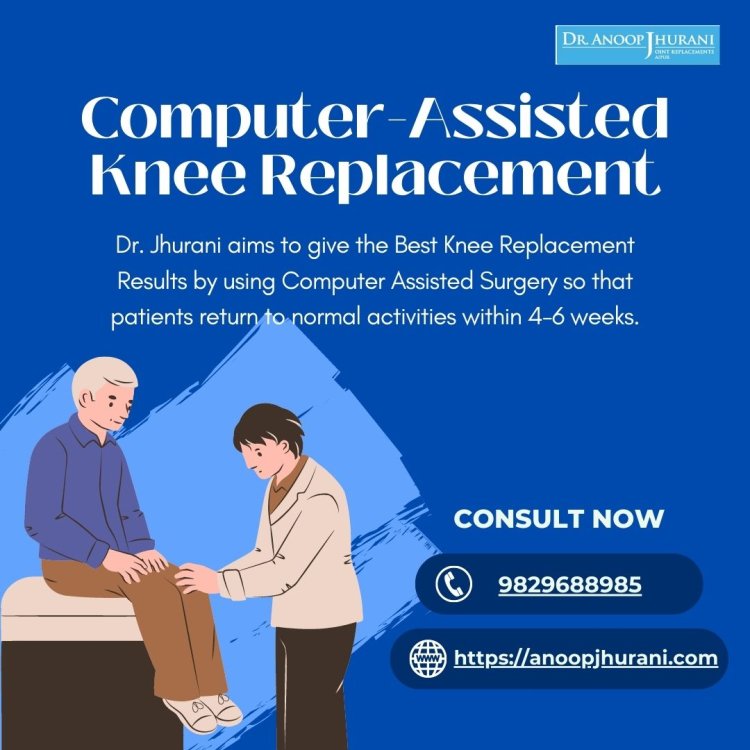Advancements in Knee Replacement Surgery: The Role of Computer-Assisted Technology
Advancements in Knee Replacement Surgery: The Role of Computer-Assisted Technology
Share this Post to earn Money ( Upto ₹100 per 1000 Views )

The Aim of Computer-Assisted Knee Replacement:
The primary goal of computer-assisted knee replacement is to enhance the accuracy and efficacy of the surgical procedure. Traditional knee replacement surgeries have been highly successful, but there has always been a margin for human error and variability in implant positioning. Computer-assisted technology seeks to address these limitations by providing real-time, data-driven insights during surgery, allowing the surgeon to make more informed decisions.
Benefits of computer-assisted surgery:
1. Improved Prosthetic Balance: Computer-assisted surgery provides real-time feedback to the surgical team during the procedure, helping them achieve better prosthetic balance. Proper balance is crucial for the knee joint's stability and function, reducing the risk of complications and improving overall joint performance.
2. More Precise Prosthesis Positioning and Alignment: With the aid of advanced imaging and navigation systems, computer-assisted surgery allows for precise positioning and alignment of the knee prosthesis. This accuracy enhances the longevity of the implant and reduces the likelihood of premature wear, implant loosening, or implant-related issues.
3. Improved Knee Functionality: By ensuring optimal implant positioning and alignment, computer-assisted surgery can lead to improved knee functionality. Patients may experience better range of motion, increased joint stability, and enhanced overall knee function compared to traditional surgical methods.
4. Early Return of the Patient to an Active Lifestyle: The improved surgical precision and reduced trauma to surrounding tissues in computer-assisted surgery can contribute to a faster recovery for patients. This can lead to an early return to daily activities, work, and hobbies, allowing patients to resume their active lifestyle sooner.
5. Less Discomfort: Computer-assisted surgery is known to be less invasive than conventional approaches. The increased precision and reduced soft tissue damage during the procedure may result in less postoperative discomfort and pain for patients.
6. Lower Chance of Fat Embolism: Fat embolism is a potential complication in orthopedic surgeries, including knee replacement. Computer-assisted surgery's precision and reduced bone trauma may decrease the risk of fat embolism, a condition where fat particles enter the bloodstream and can cause health complications.
7. Faster Recovery and Rehabilitation: The enhanced accuracy and reduced tissue trauma associated with computer-assisted surgery can lead to a smoother recovery process. Patients may require shorter rehabilitation periods and physical therapy sessions to regain strength and function in their new knee joint.
If you or a loved one are considering knee replacement surgery, it is essential to consult with an experienced orthopedic surgeon who specializes in computer-assisted techniques. Dr. Anoop Jhurani is a renowned orthopedic surgeon with extensive expertise in computer-assisted knee replacement. With a commitment to providing personalized care and utilizing the latest advancements in surgical technology, Dr. Jhurani can help you achieve the best possible outcome for your knee replacement procedure.













